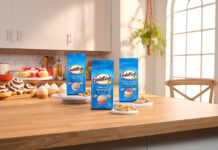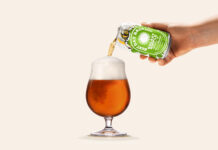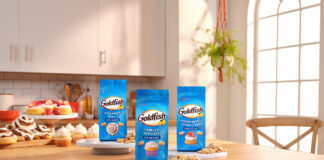
Frozen food sales have been cooling off since 2013, but competition within the space is starting to heat back up, according to The Future of Frozen report from Acosta. Manufacturers sending modernized frozen food options to market are attracting the attention of health-conscious Millennials in the prime of their spending years.
Frozen food is changing with shopping trends
Grocery shopping preferences are trending heavily toward nutritious, natural foods from transparent manufacturers that share their health goals. Successful manufacturers are following suit, and frozen foods are no exception. Convenient and healthy frozen options from restaurant-style appetizers to full dinners and desserts are revitalizing the frozen food aisle, despite the common belief that fresh trumps frozen.
The research concluded the developing frozen food crusade has resulted in 43% of Millennials buying more frozen food this year. Even better news for manufacturers, the frozen food revival crosses generational lines: 27% of GenXers, 19% of Baby Boomers, and 19% of Silents also report buying more frozen this year.
According to the study, those who reported spending more money on frozen foods in 2017 cite these specific factors as impacting their purchase decisions:
- No antibiotics (76%)
- Hormone-free (76%)
- All natural (73%)
- Sustainable (71%)
- Low sodium (69%)
- Reducing food waste (41%)
- Convenience (37%)
Why Millennials? Why now?
Acosta’s researchers found that Millennials are beginning to appreciate frozen food, and it’s due in part of the age group becoming increasingly dependent on convenient choices for themselves and their children. The generation is finding that frozen foods are highly valuable as quick dinners, convenient lunches, breakfasts for kids, and side dishes.
How food manufacturers and retailers can rule the frozen aisle
Colin Stewart, Acosta’s Senior VP, offered insight on how food manufacturers and retailers can take advantage of the frozen food trend. Frozen food has incredible potential for success in the current marketplace. It’s versatile, so manufacturers can test out breakfast, lunch, dinner, appetizers, and dessert items. Frozen food is also convenient, an important factor for fast-paced Millennials advancing in their careers or starting families. Pair the convenience and versatility of frozen foods with healthful ingredients, and manufacturers have a recipe for success.
Stewart says retailers will also benefit from increasing popularity of frozen food, which is critical in the digital shopping age. “Frozen foods are one of the few categories that are still more frequently purchased in store than online, so these items just might be the key to drawing shoppers from the perimeter into center store, as shoppers can check many items off their grocery lists at once. Retailers should ensure the frozen section is easily navigable, and should keep end-cap freezers stocked with a variety of teaser items as to what else is available down the aisles.”
For more on how Millennials are shaping the food industry landscape, check out these posts:







